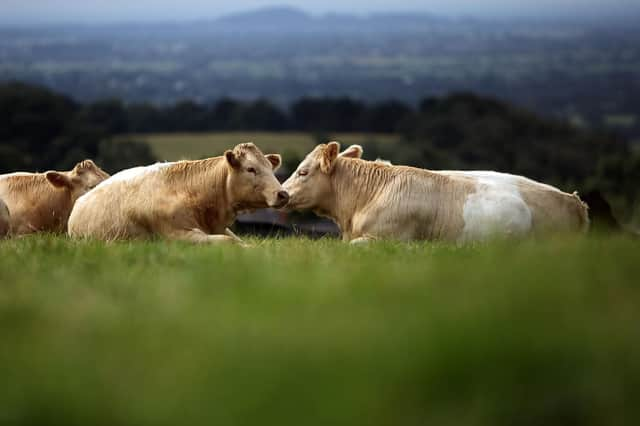Animals are sentient. Just ask anyone who knows about cows – Philip Lymbery


Outside our bedroom window is a cow barn so close I could bounce a ball off it. It’s where our neighbour’s 40 cows stay during the winter. Living so close to cows, you get to know their habits. Their favourite spots, their routines, their curiosities. The recent World Animal Day left me reflecting on a fascinating moment when the cows met a dog and taught me a lesson I’ll never forget.
It was springtime and the young cows were newly roaming. They had just been released from the barn. It wasn’t long before they met our dog, Duke, for the first time. Now Duke was a strong, 35-kilo bundle of fluff and affection who looked like a baby bear. No wonder he would catch the eye of grazing cows.
Advertisement
Hide AdAdvertisement
Hide AdI could see the cows way in the distance. They were on the far side of the river. But they still noticed Duke before promptly wading across in a straggly line. The first ones fixed Duke with a stare. I saw his ears and nose twitch expectantly. Then our bovine pursuers started their final approach. How would this end? They were now so close. I admit to feeling anxious. I needn’t have worried.
In a moment, cows and dog extended necks and sniffed before licking each other. Duke loved it. So did the cows. Tongues met in an age-old gesture of kinship. By exchanging saliva, they were bonding in a way observed by Gavin Maxwell in his classic Scottish tale of otters, Ring of Bright Water.
In that beautiful moment, Duke and the cows were demonstrating that these ‘livestock’, far from machines, were fellow creatures. That they had wants and needs, just like us. That they were sentient.
As I watched that magic moment, it reminded me of the words of farmer Rosamund Young, who described in The Secret Life of Cows how cattle are “as varied as people. They can be highly intelligent or slow to understand; friendly, considerate, aggressive, docile, inventive, dull, proud or shy.”
Cows have their own language, too. They moo in fear, disbelief, anger, hunger or distress. Scientific research suggests that they ‘talk’ to one another and retain individual identity through their voices. Perhaps that’s why cows have been such an inspiration to those wanting to show that, far from being objects or automata, animals are creatures with sensitivities and sentience.
The idea that animal sentience should be made law was the brainchild of Peter Roberts, himself a former cattle farmer who went on to be the founder of Compassion in World Farming. It’s an idea that has come a long way in recent decades. The reality that animals can feel pain, suffering, and a sense of joy if we let them has since been recognised in European and UK law.
Animal sentience legislation requires lawmakers to consider the mental and emotional well-being of the animals we share our world with. Creating a better world for animals, people, and the planet. Which is why the United Nations should officially recognise animal sentience and make the next World Animal Day a special one to celebrate.
Philip Lymbery is chief executive of Compassion in World Farming and a United Nations Food Systems Champion
Comments
Want to join the conversation? Please or to comment on this article.
